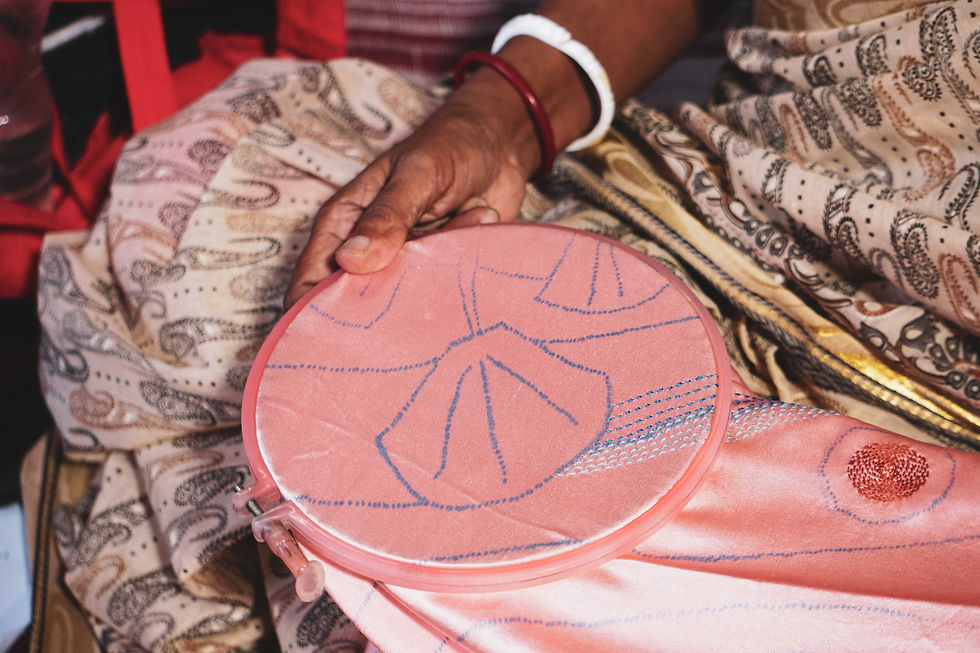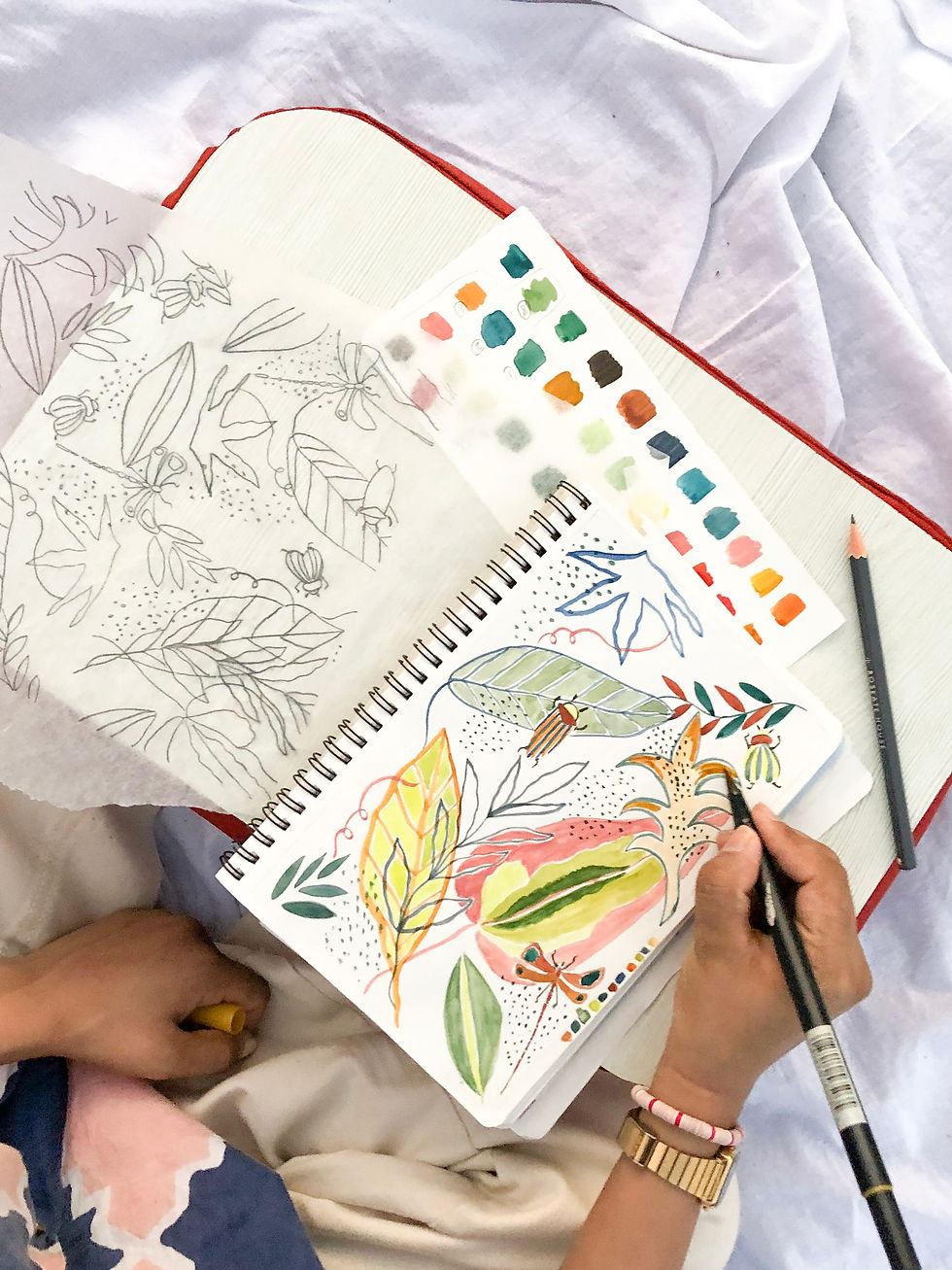Documented: The Making of a Future Heirloom
- HOWS

- Sep 17, 2023
- 3 min read
Heirloom: something of special value handed down from one generation to another


Documenting the making of our heirloom Jyaamiti kantha and how we reimagined this ancient but ever-evolving & malleable craft form.
Meet two artisans who are the practitioners of this exquisite art form & repositories of this heirloom craft, handed down from mother to daughter over generations.
On site photography by Rishi Raj.

India. The backstreets of south Kolkata.





A simple workshop run by World Fair Trade Organisation member, SASHA Association.
An incredibly talented group of women, skilled in the kantha embroidery tradition.


In collaboration with textile designer, Brinda Dudat, we created four designs for this group, exploring the wide range of stitches within the kantha lexicon.

Over many months, we experimented with cloth, pattern, stitch & colour.
Kantha placement was engineered to fit specific clothing designs with a view to making the most visual impact with each stitch.


With designs finalised, they are copied onto tracing paper to create a chapa. Pin holes are made by hand along the tracing lines. Chalk paste is rubbed through the pin holes onto the silk below, forming the kantha pattern lines.



A stitch guide, outlining which stitch style and colour is to be used where, guides the embroiderer as she works from home.

Embroidery is one of the most flexible livelihoods available to women in this region: they work when they can, where they want.
One woman works on one coat. Six months of embroidery, generations worth of skill, immeasurable patience. The outcome is our capsule collection of Jyaamiti kantha.




Meet Shivani Majumdar
Tell us about yourself: I'm 50 years old, born in Bangladesh, now I live in Panchgani Gram. My parents made hoglapatta (a traditional grass mattress) in south Kolkata. I am married; my husband is unemployed. I have a married daughter. My son has completed his BA but is also unemployed at the moment.
Where did you learn kantha: I learnt it at school when I was a kid but didn't practice it much until after marriage when I joined SASHA, 32 years ago. I earn my income from kantha, but I never make things for my own home.
What do you think about while stitching: I think about how good the work is coming out and sometimes about the deadlines and that I need to speed up! It's hard work earning an income from kantha, but I love it; I like everything about it. My special kantha skills are designing and doing some complex stitches and fine work.
Why do you think people like kantha so much: I know people love kantha, perhaps because it's so intricate and beautiful?


Meet Shruti Midha
Tell us about yourself: I'm from Bangladesh and I'm 51 years old. I live in Aadashnagar. My father was a teacher in a school in Dhaka, Bangladesh, and my mum was a home maker. My husband is a day labourer, working in construction. I have one son and two daughters who are also day labourers.
Where did you learn kantha: I learnt it as a child by observing others and I've been doing kantha since then. I sometimes make things for my home, like bed sheets, curtains and blouses for myself. I've been earning an income from kantha since I joined SASHA 30 years ago.
What do you think about while stitching: I think about when I'll finish and when I can start the next one. Kantha is like an addiction for me! I especially love doing the zig-zag stitch, and my special skill is fine work and intuitive embroidery. Kantha allows me to earn money to buy myself makeup and clothes, and support my children.
Why do you think people like kantha so much: Maybe because it's handmade and people outside India find it exotic!
Interviews by Brinda Dudat.



Read more: Kantha: The Story

















Unleash the drama with the Beth Dutton Cheetah Coat, a bold piece for bold women. Channel your inner Beth—find it now at Western Apparel.